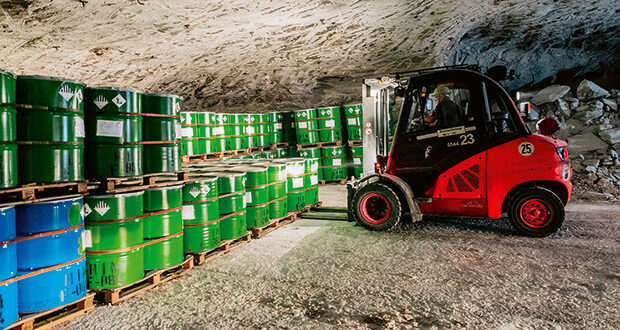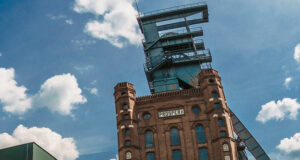Hazardous waste has been stored in part of the Wintershall potash mine in the Werra region of eastern Hesse/Germany since 1972. The Herfa-Neurode underground waste disposal site, which today belongs to the K+S Werra Verbundwerk, is the longest-serving and largest of its kind in the world, setting standards in safe storage to this day (Figure 1). Now, the 50th anniversary of the landfill was celebrated with a festive colloquium, which brought together representatives of the German waste management industry.
About 100 guests met in the Friedewald festival hall to exchange views on developments in the landfilling and reutilisation of waste. To the sounds of the K+S miners’ band Wintershall, Friedewald’s mayor Julian Kempka welcomed the visitors as host. His colleague from Heringen, Daniel Iliev, on whose municipal territory the underground storage site is located, emphasised the good, transparent cooperation between the city and the company. He said this was indispensable, especially in the sensitive but also important dumping of hazardous waste: “I am glad that we are working together here to ensure that the remains of our affluent society are safely stored,” said Iliev.
The head of the K+S Werra plant, Martin Ebeling, also declared: “We are putting a lot of effort and expertise into ensuring that safety prevails and quality requirements are met. This is a prerequisite for the 50-year success story of the Herfa-Neurode underground waste disposal site and the acceptance in our region that is necessary for it.” In this way, K+S and the REKS joint venture, which is managed together with REMEX, can make an important contribution to waste disposal safety in Germany as a sales partner, REKS managing director Martin Brown also emphasised: “Hazardous waste is produced in society and industry. These substances are in the world and must be stored in a safe place.” This is exactly what is possible in Herfa-Neurode due to the special geological conditions, he said.
All speakers at the colloquium emphasised the safety aspect in their contributions: With a total of four Class 4 underground landfills, in which hazardous waste is stored for which there is no other use, Germany has a special disposal option that is the envy of many countries. In the underground disposal sites in the salt rock, the waste is kept away from the environment for a long time and without aftercare – and this has been happening for decades without incident.
Arnd Schneider, head of the Herfa-Neurode underground waste disposal site, explained that in addition to the geological conditions with a water- and gas-tight salt deposit, this also requires a complex safety system with several artificial barriers and intensive control of the waste. Every four years, he said, the long-term safety record is reviewed, for which up to 100,000 years into the future are looked at. Since the first tonne of waste salts from an oil refinery was deposited in Herfa-Neurode on 4th September 1972, more than 3.5 Mt of hazardous waste have been safely disposed of so far. And the landfill still offers enough space to continue storage for several decades.
Other well-wishers included Sandra Giern (Federal Association of the German Waste Management, Water and Recycling Industry), Thomas Kießling (ERCOSPLAN Ingenieurgesellschaft Geotechnik und Bergbau), Carsten Spohn (Interessengemeinschaft der Thermischen Abfallbehandlungsanlagen in Deutschland), Andreas Ellerkmann (Indaver Deutschland), Torsten Zuber (REKS) and Dirk Röth (BAUREKA Baustoff-Recycling). In their speeches, they addressed various aspects of waste disposal, recycling management and landfilling. And they unanimously wished the birthday child, the Herfa-Neurode underground landfill, 50 more years of successful and safe operation in the disposal of hazardous waste. (K+S/Si.)

